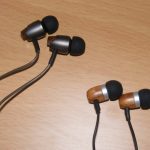Google welcomes U.S. Cellular to the Project Fi family
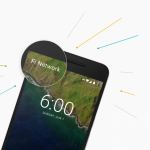
One of the most stifling trends in modern times -- from a technology standpoint -- is the death of unlimited mobile data. Now that customers must monitor how much data they use, it can be argued that progress -- especially regarding the cloud -- is negatively impacted. As someone who still clutches to a grandfathered unlimited Verizon plan, I feel for my fellow smartphone users.
Thankfully, Google's Project Fi cellular service largely takes the worry out of data overages. While it is not unlimited, it offers affordable tiers -- you won't have to claim bankruptcy for using too much data. The most brilliant aspect, however, is that it aggregates multiple carriers -- Sprint and T-Mobile -- so that it can switch to the one with better coverage when needed. Today, Google welcomes a third carrier, U.S. Cellular, to the Project Fi family.
Inateck BH1101 and BH1105 earphones [Review]
Ulefone Vienna: A competitive phablet that doesn't break the bank [Review]

Up and coming Android manufacturers are proving that you do not have to spend hundreds and hundreds of dollars to get a good smartphone. The Xiaomi Mi4c, which I reviewed late last year, is a fantastic alternative to big-name devices from the likes of Samsung and LG that does not break the bank. The new Mi4s is shaping up to be even better, and the Mi5 looks to be more impressive still.
But, say you prefer something that's a bit larger that is also relatively inexpensive. Well, in this case, you should take a look at the new Ulefone Vienna, which packs a big display, large battery, nice camera, and competitive specs, all at a sub-$200 price point. You can read my impressions below.
Parallels Access 3.1 adds full support for iPad Pro, 3D Touch and Android M

Parallels has released Parallels Access 3.1 for iOS and Android, a major update to its subscription-based app that provides users with the ability to remotely access and control Windows PCs and Macs.
The app, which allows users to control their computers remotely through their mobile device, adds support for the latest Apple devices and improves the way it interacts with Windows 10 PCs via added support for Tablet Mode and gestures. Game Mode has also been improved on the iOS app.
Why aren't we buying tablets anymore?

Six years after the release of the iPad, a once booming market is on the verge of a massive shift, one that not many predicted. For those who visited Mobile World Congress, the world’s largest mobile conference earlier this year, you had a better chance of spotting the odd person wearing Google Glasses than any new tablet devices.
According to the recent industry analysis conducted by IDC, the tablet market was down by as much as 10.1 percent, last year, with an estimated 206.8 million tablets shipped. That’s down from 230.1 million shipped in 2014. These stats are a bit better if you look at other research numbers, which estimate that 224.3 million tablets were shipped in 2015, compared to 242.2 million in 2014 -- a decline of only 8.1 percent.
Tronsmart CC1T charger brings Quick Charge 3.0 in your car [Review]
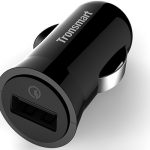
Quick Charge is a wonderful technology that enables your smartphone or tablet to top up its battery at a much faster rate -- up to 400 percent faster, for its latest iteration. But, to enjoy the benefits that Quick Charge has to offer, you will have to use a compatible charger. One may be provided in the box, but if that is not the case there are some very nice wall chargers that are great for the job.
But if you need to charge your smartphone or tablet while driving you will have to pick up a dedicated car charger. I've been testing Tronsmart's CC1T car charger, which is one of the more-basic options with Quick Charge 3.0 support in the company's lineup, and you can read my impressions of it below.
Microsoft's share of the mobile market plummets to below 1% as Android continues to rise
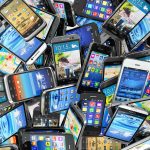
Global smartphone sales figures published by Gartner show that Windows-based devices have a market share of just 0.7 percent. The latest figures cover the first quarter of 2016 and reveal that fewer than 2.4 million handsets with Microsoft's OS installed were sold.
This is a dramatic drop from the first quarter of 2015. A year ago the numbers were hardly earth-shattering, but with a 2.5 percent market share they were decidedly healthier than right now. While Windows Phone continues to drop like a stone, Android's seemingly unstoppable rise continues, with Google increasing its market share from 78.88 percent a year ago to 84.1 percent in Q1 2016. Apple suffered a drop to 14.8 percent.
Apple Watch leads the smartwatch market, Fitbit dominates wearables

Even though it is not Apple's most important product, Apple Watch is actually a market leader. In Q1 2016 shipments totaled 1.5 million units, according to a new IDC report, making it the undisputed king of this market.
Apple Watch actually holds a healthy lead over its Samsung-made rivals, having a market share of 46 percent as opposed to 20.9 percent share for the second place player. As you can see, the market as a whole is rather small, with total shipments of just 3.2 million units in an entire quarter.
9 tips to improve your smartphone's battery life
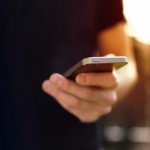
You’re really concerned about your battery life, aren’t you? That’s right, when it’s time to travel or go out, you always remember two things -- your toothbrush and your charger! The toothbrush to make your morning fresh and the charger to save you from the irritation of the diminishing smartphone battery during your working day.
Battery life has been one of the most important concerns for users, app developers, and manufacturers. On average, most smartphone batteries last 1-2 days before being completely depleted. In smartphone reviews we see how battery life can outrank other features -- after all, if the battery’s dead we can’t use them for those important calls or emails! While we wait for any latest technology to come to market, let’s look at some easy ways to conserve battery life. These tips will definitely help to make you feel relaxed and anxiety-free till you return safely to your charger.
Nest makes Thread networking protocol open source -- names it 'OpenThread'

Some people still have the perception of open source being for hobbyists and Linux enthusiasts. I can understand this wrong viewpoint, however. After all, Microsoft has long had a stranglehold on both home and business workstation computing. That company has historically been a closed-source champion. Over time, open source ideology has matured, being embraced by many major companies -- the Windows-maker included.
Today, the Google-owned Nest makes a big announcement. Its 'Thread' networking protocol is now open source. Dubbed 'OpenThread', the source code is now available on GitHub. Will it see a large scale adoption?
Android devices suffer higher failure rates than iOS

People have become increasingly reliant on smartphones and as a result they have become less tolerant of poor performance and device problems.
Blancco Technology Group has released a report based on the latest results from its SmartChk diagnostic platform, showing higher failure rates in Android devices than in iOS ones, and revealing some interesting trends.
Think Android security updates take too long to roll out? So do the FTC and FCC
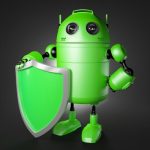
Both the Federal Communications Commission (FCC) and Federal Trade Commission (FTC) are starting to ask the questions that Android users have been asking for years: why do updates and upgrades take so long to roll out?
If you're in possession of a flagship or recent handset, the chances are you're in line to receive timely updates for the foreseeable future. But Android's fragmentation means that older handsets quickly drop off the radar, get forgotten and remain unpatched. The FCC and the FTC both want to know why security patches are slow to hit phones, and the agencies have launched separate, but parallel, investigations.
US government certifies LG's G5, V10 for enterprise and military use

LG today announced that the US government has certified its G5 and V10 flagship Android smartphones for enterprise and military use. The testing was conducted by the National Information Assurance Partnership (NIAP), which verifies the compliance of products with the "Common Criteria" international security standard, which is said to be recognized by 25 countries.
Although LG is only boasting about the two aforementioned handsets, NIAP's test results show that G4, its flagship from last year, is also fit for use in enterprise and military sectors, when running Android 6.0 Marshmallow. NIAP's stamp of approval was received on April 14.
SCOSCHE unveils MagicMount PowerBank for Android and iPhone
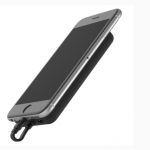
Removable phone batteries used to be a very important thing to me. It is one of the reasons, at least initially, I shunned the iPhone for Android smartphones. Over time, however, this became less important, thanks to USB battery packs. Ultimately, I bought an iPhone and couldn't be happier.
The problem with these battery packs, however, is that the cable creates a bit of a mess; it looks unsightly to have a wire dangling from your pocket. Meanwhile, battery cases are often bulky, ruining the svelte nature of the phone. Now, SCOSCHE unveils its MagicMount PowerBank for Android and iPhone. By utilizing magnets, it can be easily affixed to the rear of the phone when needed, and removed when not. The super-short cable will prevent tangling too.
Marshmallow now runs on 7.5 percent of Android devices
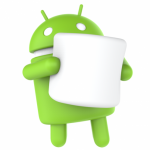
In just two months, Marshmallow has more than doubled its usage share in the Android market, thanks to the introduction of new devices and the availability of more software updates for older but popular handsets.
According to Google's latest figures, which are based on data collected during the seven days ending March 7, 7.5 percent of Android devices now run Marshmallow. When I last covered the distribution numbers in March, its usage share was at just 2.3 percent and it looked like its rise towards the top would be a very slow one.
Recent Headlines
Most Commented Stories
© 1998-2024 BetaNews, Inc. All Rights Reserved. Privacy Policy - Cookie Policy.
